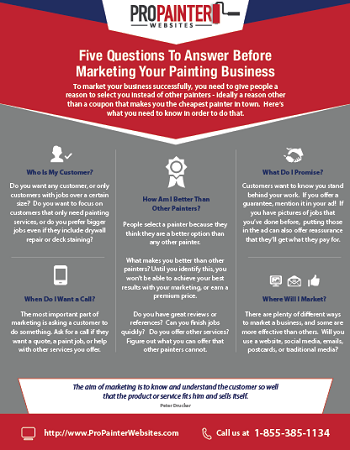Explore The Influence Of Seasonal Aspects On The Efficiency Of Business Exterior Paint And Recognize The Optimum Times To Achieve Enduring Outcomes For Your Project
Explore The Influence Of Seasonal Aspects On The Efficiency Of Business Exterior Paint And Recognize The Optimum Times To Achieve Enduring Outcomes For Your Project
Blog Article
Write-Up By-Ford Browne
When you're planning a business external painting job, seasonal elements can make or damage your outcomes. You'll want to take into consideration how temperature level and humidity influence paint application and drying times. Choosing the best season can guarantee your paint adheres effectively and lasts much longer. But which periods are genuinely the very best for this kind of work? Let's explore the crucial elements that can impact your job's success.
The Effect of Temperature on Paint Application
When you're intending a commercial outside paint task, the temperature level can dramatically impact exactly how well the paint adheres and dries out.
Ideally, you intend to repaint when temperature levels range in between 50 ° F and 85 ° F. If it's too cold, the paint may not cure effectively, causing issues like peeling or cracking.
On the other side, if it's too hot, the paint can dry out also promptly, avoiding correct adhesion and causing an unequal coating.
You should also take into consideration the moment of day; early morning or late afternoon supplies cooler temperatures, which can be a lot more positive.
Always examine the supplier's referrals for the specific paint you're making use of, as they often provide advice on the suitable temperature range for ideal outcomes.
Moisture and Its Effect on Drying Times
Temperature isn't the only ecological element that affects your commercial exterior paint job; humidity plays a substantial role also. visit website can slow down drying times substantially, impacting the total quality of your paint task.
When the air is filled with wetness, the paint takes longer to cure, which can lead to problems like inadequate adhesion and a greater risk of mildew development. If you're painting on an especially damp day, be gotten ready for prolonged wait times between layers.
It's vital to keep an eye on neighborhood weather and strategy accordingly. Ideally, please click the next website for moisture levels between 40% and 70% for optimum drying out.
Keeping these factors in mind ensures your project stays on track and delivers a lasting finish.
Best Seasons for Commercial Outside Painting Projects
What's the very best time of year for your industrial exterior paint tasks?
official site and early fall are normally your best options. Throughout these periods, temperature levels are moderate, and moisture levels are often reduced, creating excellent conditions for paint application and drying out.
Prevent summer's intense heat, which can trigger paint to completely dry also quickly, resulting in inadequate adhesion and coating. Likewise, winter season's cold temperature levels can impede correct drying and curing, running the risk of the long life of your paint work.
Go for days with temperatures between 50 ° F and 85 ° F for optimal outcomes. Bear in mind to check the local weather report for rain, as damp problems can wreck your job.
Preparation around these aspects ensures your painting task runs efficiently and lasts longer.
Conclusion
Finally, preparing your commercial external painting jobs around seasonal factors to consider can make a significant difference in the outcome. By scheduling job during the perfect temperatures and humidity levels, you'll guarantee much better attachment and drying out times. Remember to keep an eye on local weather forecasts and select the correct time of year-- springtime and early fall are your best options. Taking these steps will aid you accomplish a durable and professional finish that lasts.
